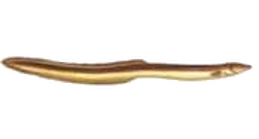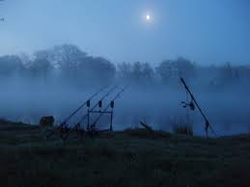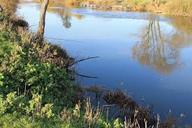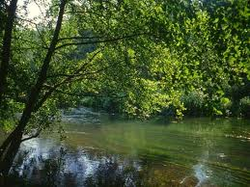Eels
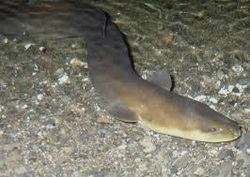
The eel has an elongated body similar to that of a snake. Longish head with rounded eyes. The eyes are small in young eels and large in older and silver eels. The eel has a protruding lower jaw longer than the upper jaw. The teeth are small and set in bands in both jaws and in a patch on vomer. Small and vertical gill openings restricted to the sides. The dorsal fin originates far behind the pectorals fins and the dorsal and anal fins confluent with caudal fin. The anal fin set slightly behind anus, well back from origin of dorsal fin. The pectoral fins of the eel are small and rounded. Lateral line conspicuous. It has minute elliptical scales embedded in the skin.
Adults in freshwater are greenish-brown on black, whitish-yellowish on belly. During the silver-eel stage during spawning migration the colouration changes to blackish on the back and bright silvery on sides and belly.
The best time to catch eels is early dawn or at dusk and through the night but they can be caught throughout the day. The eel feeds all year around with July to October noted as the best months to catch them. Eels feed almost exclusively on the bottom and are usually found where there is underwater obstacles or among reeds.
Baits to use
Deadbaits and deadbait sections, Worms, big lob worms, maggots and casters.
Adults in freshwater are greenish-brown on black, whitish-yellowish on belly. During the silver-eel stage during spawning migration the colouration changes to blackish on the back and bright silvery on sides and belly.
The best time to catch eels is early dawn or at dusk and through the night but they can be caught throughout the day. The eel feeds all year around with July to October noted as the best months to catch them. Eels feed almost exclusively on the bottom and are usually found where there is underwater obstacles or among reeds.
Baits to use
Deadbaits and deadbait sections, Worms, big lob worms, maggots and casters.
Where to look for Eels

